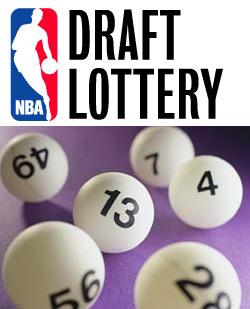 |
| The Bid Draft would end the NBA's reliance on ping pong balls. |
Nevertheless, the Howard quandary highlighted an issue that has garnered increasing attention in recent months: If a team isn’t going to be really good, it’s better to be really bad.* Sam Presti executed the most salient example of this strategy with his tear down of the Rashard Lewis/Ray Allen Sonics into the current Thunder juggernaut. In response, we have seen what seems to be an increasing number of teams “tanking” for better draft position, either by trading away good players or by benching their best players with questionable “injuries” once it becomes clear they won’t be competing for the playoffs that season. The belief is that getting a high draft pick is the easiest road to getting good again.**
*When even Michael Jordan has something figured out about team management, you know it’s entered the conventional wisdom.
**This study by David Berri argues otherwise. While I think the study has some holes (perhaps a better study would be rating how teams with high lottery picks did a few years later) and I’m not a huge fan of Wins Produced as a metric, it is compelling evidence that being bad is not necessarily the quickest way to being good. Nonetheless, NBA teams think tanking is the way to future success, so it’s still a problem regardless of whether it actually works or not.
The problem was neatly encapsulated by Jeff Van Gundy (2:00 mark of this video) and a subsequent article by Henry Abbott. Meanwhile, tanking has become fodder for nightly ballosphere Twitter jokes. Humor aside, the growing consensus is that tanking is a bad thing and serious changes in the system are needed. The issue, however, is balancing the problem of incentivizing losing with the problem of competitive balance that the draft is meant to alleviate. To these eyes, a hopeless, uncompetitive team in a particular city is a worse problem than the league incentivizing losing in certain situations. Therefore, I believe solutions that award draft picks without any regard for team quality would hurt the game more than they would help. Helping bad teams get good without incentivizing losing is a rather intractable problem.
The best solution I’ve been able to come up is a system I call the Bid Draft.* It is quite simple: Allow teams with salary cap space to bid on the top draft slots.

